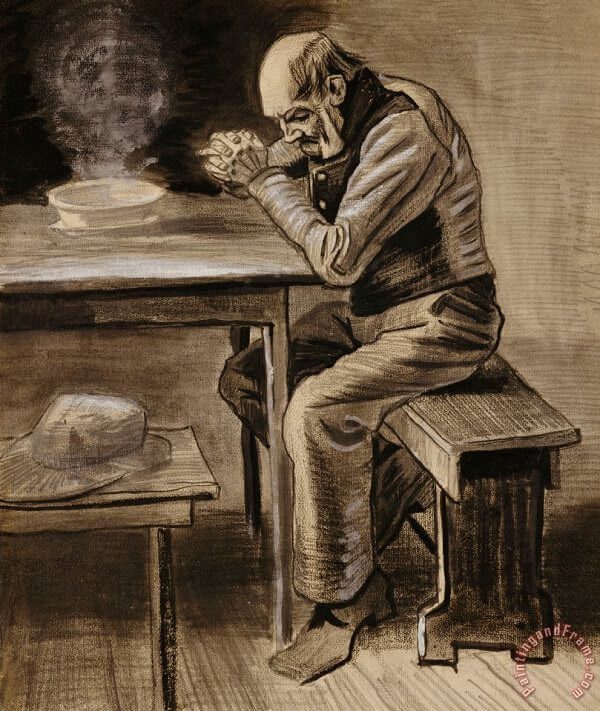The Prayer, 1882 by Vincent Van Gogh

The population of The Hague grew from 45,000 to 200,000 people over the course of the nineteenth century, and by the time Van Gogh had moved there the city had developed beyond its original defense canals. There was a distinct class division, the middle classes had grown and were becoming wealthier while the lower classes were crammed together in primitive living conditions. Laborers and peasants were drawn to the city in search of better wages, and although their wages may have improved, their living conditions for the most part had not. Van Gogh, who was from a bourgeois family, found himself increasingly critical of the background in which he had been raised. He wanted to draw and point those who worked long and hard for their living in such a way that people would recognize and respect their labor.
This drawing of an old man praying before eating his meagre supper is particularly poignant. Van Gogh used the same model for several drawings, and though the artist was attracted to these subjects at this time, realistically these were the only people who he could afford to pay to model for him




















